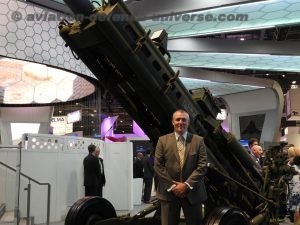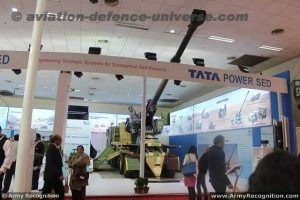 By Lt. Gen B S Pawar (Retd.)
By Lt. Gen B S Pawar (Retd.)
Introduction
The Regiment of Artillery celebrates its 190th ‘Gunners’ Day’ on 28 September this month. The present artillery inventory is grossly inadequate both in quantity and quality (holding six different caliber guns, most of which are either obsolescent or reaching obsolescence with limited ranges).
However after almost three decades of stagnation there has been a significant forward movement in its modernization thrust in the last couple of years. The success of the indigenously developed 155mm 45 calibre Dhanush gun ( upgraded version of the Bofors gun), the induction of the first two 155mm 39 calibre M777 Ultra-Light Howitzers (ULH) and the signing of the contract for 100 self-propelled tracked 155mm 52 calibre howitzers are positive developments in the Artillery’s overall transformation plan.
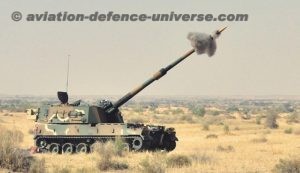 Some setbacks with regards to barrel bursts during firing in case of Dhanush and M777 in the last four months are certainly a cause of concern, but these seem to be temporary glitches which are expected to be overcome soon, especially when the initial probes have pointed towards the malfunctioning of the indigenously produced 155 mm ammunition used in the firing.
Some setbacks with regards to barrel bursts during firing in case of Dhanush and M777 in the last four months are certainly a cause of concern, but these seem to be temporary glitches which are expected to be overcome soon, especially when the initial probes have pointed towards the malfunctioning of the indigenously produced 155 mm ammunition used in the firing.
However, the journey to achieve total transformation and modernisation has just begun and the final target is still a long way off. The Governments thrust towards ‘Make in India’ and the big time involvement of the private sector in defence manufacturing, specially artillery projects should give the required impetus to this process – the show casing of the indigenously developed Advanced Towed Artillery Gun System (ATAGS) during Republic Day parade this year is a befitting tribute to the above process. Recent reports of the ATAGS achieving 40 km plus ranges during firing in Pokhran Ranges is an encouraging sign.
However despite the above positive developments, the main cause of concern and worry remains the sordid state of ammunition, the main weapon of the Artillery, both in quantity and quality – the same has been highlighted in the recently released CAG report as well, irrespective of the denials of the Defence Ministry.
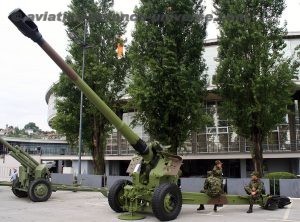 Transformational Plans
Transformational Plans
The artillery’s modernisation plans include purchase and manufacture of towed, mounted and ultra-light howitzers as well as self-propelled artillery both tracked and wheeled, multi-barrel rocket launchers, missiles, surveillance and counter bombardment equipment and most important of all, the ammunition and communication equipment – valued at approximately over $7 billion. The main highlight in this transformational plan is the inclusion of the mounted gun system and wheeled self propelled artillery platforms. The mounted gun system provides a high level of autonomy and shoot and skoot capability and has a distinct advantage in the mountains due to its shorter turning radius compared to the towed gun. The wheeled self propelled gun is ideally suited for the plains and the semi desert terrain vis-a-vis the tracked version providing better speed and mobility at lesser costs – however this project has now been shelved and is not expected to be revived in the future.
While the modernization related to rocket artillery (Smerch & Pinaka), missiles (Prithvi, Agni and Brahmos) and surveillance equipment (UAV’s and Weapon Locating Radar) is progressing satisfactorily, the main concern and problem area remains regarding the induction of roughly 2820 guns/ howitzers of all types, even though significant movement forward has been made as brought out earlier. Six additional Pinaka and one Smerch units have been approved for induction by the Government.
 Modernisation Status – Positive Developments
Modernisation Status – Positive Developments
After decades of stagnation, setbacks and frustration the artillery modernization process is finally showing signs of some positive movement forward. The 155mm 45 calibre indigenised Dhanush gun system being produced by the Ordnance Factory Board (OFB) is undergoing user exploitation in the deserts and high altitudes. As per reports indent has been placed on the OFB by the MOD for 114 Dhanush Howitzers to ensure it can start bulk production after user trials culmination – orders for more numbers (300) could follow based on the performance of the gun. While this is a welcome development, it is not the ideal solution as technology in development of guns/ howitzers has moved to an altogether different level, way beyond the technology of the 80’s and the modernization focus must remain on the 155mm/ 52 calibre guns.
Another important development is the culmination of the process for the acquisition of the 145 BAE Systems M777 Ultra Light Howitzers (ULH), being acquired through the Foreign Military Sales (FMS) route with the United States – two guns have already been inducted for exploitation and formulation of Range Tables. BAE Systems has down selected Mahindra Defence Systems as its partner for the assembly, integration and testing of the 145 howitzers to be inducted. This is a priority army project, keeping in mind the raising of the new Mountain Strike Corps and the long outstanding inadequacy of artillery in the mountains on our Eastern and Northern borders.
The principle project to buy 400 x 155mm / 52 caliber towed guns followed by the indigenous manufacture of another 1180 guns is currently stuck at the trial stage, though confirmatory trials have also been completed. In contention are the Elbit Systems (earlier Soltam ) ATHOS 155/52 calibre and Nexter’s TRAJAN 155/52 Calibre Towed Gun Systems. The outstanding feature of these trials has been the involvement of Indian private sector defence companies who have tied up with the foreign vendors – Bharat Forge with Elbit and Larsen & Toubro (L & T) with Nexter.
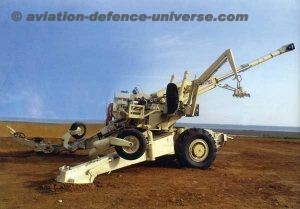 This is a positive development and it is hoped that this venture does not go the way of the earlier two trials in this category. However, with the ATAGS project showing a lot of promise there seems to be hope for the future. Another important project is the Mounted Gun System (MGS) involving off-the-shelf purchase of 200 x 155mm/52 calibre guns, followed by indigenous manufacture of another 614 mounted gun systems. Available in the world market are Sweden’s Archer, French Caeser, Bosnia’s Nora Gun Systems and the latest Indian entry, the Tata Power SED gun system. This system has its inherent advantages over the towed guns in mountainous terrain and today is the mainstay equipment of many western nations.Both Caeser and Archer are combat proven gun systems having seen service in Afghanistan. While the RFP in this case is yet to be issued, a number of private players are already jockeying for this project.
This is a positive development and it is hoped that this venture does not go the way of the earlier two trials in this category. However, with the ATAGS project showing a lot of promise there seems to be hope for the future. Another important project is the Mounted Gun System (MGS) involving off-the-shelf purchase of 200 x 155mm/52 calibre guns, followed by indigenous manufacture of another 614 mounted gun systems. Available in the world market are Sweden’s Archer, French Caeser, Bosnia’s Nora Gun Systems and the latest Indian entry, the Tata Power SED gun system. This system has its inherent advantages over the towed guns in mountainous terrain and today is the mainstay equipment of many western nations.Both Caeser and Archer are combat proven gun systems having seen service in Afghanistan. While the RFP in this case is yet to be issued, a number of private players are already jockeying for this project.
With regards to the tracked gun system, the 155m/52 calibre Korean Samsung Teckwin ‘K-9 Thunder’ now called the K-9 Vajra gun system is to be produced in India by L & T in collaboration with the Korean partner. This is a major development and will give a capability fillip to the Indian defence industry -there is a requirement of 100 x 155mm/52 calibre tracked SP guns and these numbers could increase with the wheeled SP guns project now being defunct.
Another important feature has been the upgradation of the130 mm/39 caliber M46 Russian guns to 155mm/45 calibre. While the plan was to upgrade a total of 480 guns, only 180 guns were upgraded earlier due to Soltam ,Israel (firm involved in the upgradation with OFB) getting black listed by the MOD during this period. However the defence ministry has given approval for up gunning of 300 additional M-46, 130 mm/39 caliber guns to 155mm/45 caliber with the participation of the private sector in the tender process. The private industry has been approached to undertake this project in collaboration with a foreign vendor right from providing the required ordinance and accessories to the up gunning itself. Companies like Tata, L&T and Bharat Forge are the private venders involved in this venture- this process is already in progress. While this is a suitable step to tide over the current criticality, it is an interim solution and must be seen in that context.
The developments in the Rocket Artillery and Missile arena have been very encouraging with the indigenously developed Pinaka MBRL System performing exceedingly well. These systems are being produced by Tata and L & T. Brahmos, the long range cruise missile is being manufactured in India as a joint venture with Russia. The strategic value of this system is immense and further extension of its range is being considered. In addition the development of the indigenous developed ‘Swati’ weapon locating radar (WLR) by the BEL is certainly a major achievement in the modernization and ‘Make in India’ process. This weapon system has already entered service and competes with the best in the world.
Conclusion
The Government’s decision to involve the private sector in defence production and the focus on ‘Make in India’ and indigenisation, has given a major boost to the modernization process. A number of private companies like L&T, Bharat Forge, Mahindra Defence Systems, Tata Powers, Reliance Defence and Punj Lloyd have taken the plunge and are forging JVs with renowned global defence equipment manufacturing companies, especially those related to manufacture of 155mm/52 caliber artillery howitzers of all types. Also in a major policy shift, Licenses are being given to the private sector for development / production of certain type of ammunition like fuzes and charge systems – a very welcome step under the present circumstances. There is an urgent need to maintain this momentum to upgrade/modernize the artillery and ensure accelerated acquisitions to effectively redress the growing absoloscence of the Indian Artillery in the coming decade.
(Lt Gen BS Pawar is a Delhi based defence analyst, former Head of the Army Aviation Corps and Commandant School of Artillery. The views in the article are solely the author’s. He can be contacted at editor.adu@gmail.com.)






































